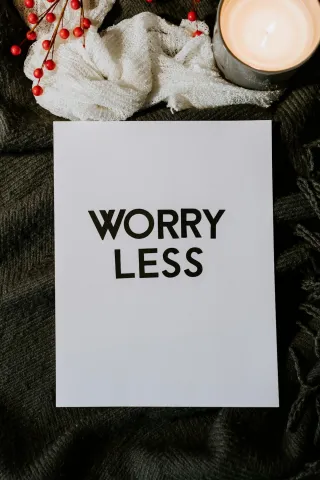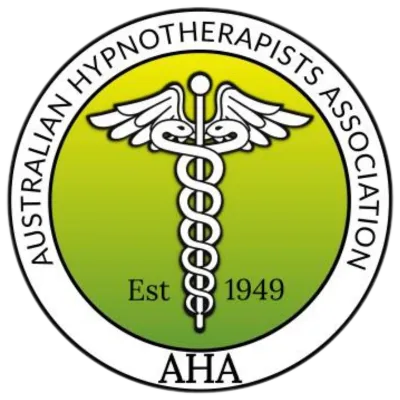HYPNOTHERAPY FOR WEIGHT LOSS & EMOTIONAL EATING
Dissolve the stress, shame, or unmet need behind food urges so they no longer drive behaviour.
Feel calmer around food, steadier in your body, and clearer in your choices—without diets, rules, or forcing. Dissolve the underlying stress or emotional need that triggers overeating so cravings naturally fade.
WHO IS THIS FOR
“I’m fine all day, but stress or boredom flips a switch and I overeat at night” → “I’m fine all day, then stress, fatigue, or emotion triggers eating or binge urges”
“I’ve tried every diet…” → “I’ve tried diets or restriction, but nothing addresses why I turn to food”
“I want a calmer relationship with food—without shame or rigid rules” → “I want to feel in control without guilt, shame, or strict diets”
WHAT CHANGES HERE
“Urges feel less intense; you get a longer pause before acting” → “Cravings lose their grip as the underlying stress, boredom, or emotional pain dissolves”
“Fewer binges and night-time snacking; steadier meal rhythms” → “Night-time overeating or emotional snacking naturally reduces without forcing or dieting”
“A calmer body, clearer mind, and kinder inner voice” → “You feel steadier in your body, calmer in your mind, and kinder to yourself around food”
“More choice in the moment…” → “You notice natural choice and effortless pause instead of auto-pilot eating”
CRAVING DISSOLVE RESET (60-120 SECONDS)
Orient: slowly name 5 neutral details you can see right now
Sip: drink a glass of water and feel the coolness in your mouth
Breathe: in for 4, out for 8 (or double inhale + relaxed exhale if agitated)
Ground: feel your feet, drop your shoulders, unclench your jaw
Say (quietly): “I’m safe enough to wait 10 minutes and choose what helps”

HOW SESSIONS HELP (NO PRESET PLAN; YOUR PACE LEADS)
We dissolve the unmet need or emotional trigger behind eating, so the habit naturally falls away.
Safety first: we build a present-moment sense of “I’m safe enough now”
Map your pattern → cue → meaning → urge → action → result → “Then we soothe the pain behind it
Update protective responses: the urge arises, but the emotional need no longer drives the action.
Practical tools remain, but include focus on dissolving the emotional trigger
Real-life resolutions: social pressure, restaurant menus, “just one more” moments
No preset formula—each session is tailored in the moment to what your system needs.
HIGH-RISK MOMENTS WE PREPARE FOR
Evenings, TV time, and arriving home from work
Parties, holidays, travel days, and office snacks
Stress spikes, tough conversations, and boredom windows
Menstrual cycle shifts, low-sleep days, and “I’ve blown it” spirals
WHAT THIS WORK IS - AND ISN'T
We don’t force memories or re-live the past
We build capacity first, then add choice and language
You stay in control the entire time
Not a crash diet or medical weight-loss program
No food shaming; we respect all bodies and goals
I don’t prescribe meal plans; we support habits and regulation
Online or in-person (Neerim South). Dog-free appointments available on request.
CARE & HONESTY
No forcing, no shaming—ever. We go at your pace.
With your consent, I’m happy to coordinate with your GP or Nutritionist/Dietitian.
FAQs
Will I be in control? Yes. You remain awake, aware, and in charge.
Will I just swap habits? → “No swapping—because we dissolve the need behind the habit, the urge often disappears entirely”
Do we have to talk about the past? Only if helpful. We avoid overwhelm.
How many sessions? Many notice change in 1–3; we decide together.
Is online effective? Yes. A quiet space and headphones work well.
Is this suitable if I have a medical condition? This supports—not replaces—medical care. If you live with conditions like diabetes, thyroid issues, or an eating disorder hypnotherapy works well.
Medical note: This service supports behaviour change and regulation; it is not a substitute for medical care or nutrition therapy. Results vary.
MICRO-FAQ
Why do "small stresses" trigger big cravings?
Because your nervous system doesn’t measure “small”—it measures “safe or not.” When micro‑stresses stack, your body reaches for the fastest regulator it knows, and food is a quick way to shift state. The craving is a bid for safety, not a character flaw. We raise your BQ (body intelligence) so you catch the early signals—tight jaw, shallow breath, restless hands—and use a 30–120 second reset to lower the urgency before it becomes a pantry raid.

Why am I disciplined all day then lose it at night?
By evening you’re often under‑fuelled, over‑stressed, and decision‑fatigued, so your brain prioritises quick comfort over long‑term plans. Cortisol is shifting, blood sugar may be wobbly, and “I deserve a break” becomes the doorway. We boost your BQ so you notice the 4–6pm dip, add steadying supports (real meals, protein, water, a 2‑minute downshift), and install a simple “pause then choose” routine—so nights stop undoing your day.

Why do I over-apologise or say ys to food I don't really want?
That’s a protective fawn pattern: keeping the peace to feel safe or liked. Your body senses risk in saying no, so “yes” comes out before you even think. We grow your BQ to notice the tell—throat tight, chest squeeze, smile that isn’t true—and pair it with soft boundary scripts like, “Looks delicious—no thanks, I’m all set.” With practice, your system learns that “no” can be safe.

Why do I shut down, go numb, or eat on autopilot?
Shutdown is a freeze response—your system’s way to reduce overwhelm by going dim. Autopilot eating becomes a quick way to feel something or to stay numb. We teach your body how to come back online safely: orient to the room, lengthen the exhale, feel your feet, add a tiny movement, then choose the next kind step. Building BQ means you notice you’re fading sooner and have a plan that doesn’t require willpower.

Why do I get big feelings with no clear memory (emotional flashbacks)?
Emotional flashbacks are old patterns firing without a picture—implicit memory stored in the body. Your system recognises a cue, sounds the alarm, and you feel it now even if you can’t “remember” why. We don’t dig for scenes; we update the response. With BQ—naming sensations, orienting to “I’m safe enough now,” and titrating the charge—you get shorter spikes and quicker recovery.

Why do diets make me think about food even more?
Restriction turns food into a scarce, high‑value object—your brain obsesses because it thinks resources are limited. Rules also trigger rebellion and all‑or‑nothing swings. Instead, we build regulation first (BQ), add enough real food earlier, and use gentle structure—so urges drop and choices get simpler without the mental tug‑of‑war. Less fight, more steady.

Why don’t diets work long term?
Because they fight your biology and your nervous system. Restriction signals “scarcity,” which ramps up food thoughts, intensifies hunger signals, and triggers all‑or‑nothing swings—so willpower gets exhausted and the old pattern returns. If the real drivers (stress, shame, exhaustion, loneliness, habit loops) stay untouched, the urge simply finds its way back. We raise your BQ (body intelligence), regulate first, and build flexible structure—enough real food earlier, simple pauses, self‑kind boundaries—so change holds without a constant fight.
Emotional eating isn’t a failure; it’s a fast way your system has learned to self‑soothe. Food works—briefly—because it shifts your state. Instead of shaming the strategy, we fix the root cause: we map your pattern (cue → meaning → urge → action), rebuild safety in the body, and update the response so the trigger loses its charge. With bq, you catch the early signals, use 60–120 second resets to calm the spike, and add gentle supports (meals, sleep, movement, boundaries). When your nervous system feels safe enough, the urgency eases—and choices get simpler, sustainable, and yours.

Evidence Based Guide - Common Fat Depots
Key drivers that link mental health to fat pattern
- Stress hormones: HPA-axis changes and cortisol favor abdominal storage.
- Sleep disruption: short/broken sleep shifts appetite hormones (↑ghrelin, ↓leptin) and insulin sensitivity toward gain, especially around the waist.
- Medications: some antidepressants and antipsychotics increase appetite/weight and central fat.
- Behaviour shifts under distress: more evening intake, ultra‑processed foods, alcohol, and lower daily movement (NEAT).
- Inflammation and insulin resistance: common in chronic stress, PTSD, and depression, promoting central and ectopic fat.
Common fat depots tied to mental health
1. Visceral abdominal fat (around internal organs)
- Mental health links: chronic stress, PTSD, depression, poor sleep, shift work; glucocorticoid therapy.
- Why here: cortisol and insulin together promote storage in this depot; visceral fat cells are more hormonally responsive.
- Purpose: cushions internal organs and supplies rapid energy; excess raises cardiometabolic risk.
- Evidence: stress/cortisol linked to central adiposity; visceral fat strongly tied to risk.
2. Subcutaneous abdominal fat (under the skin of the belly)
- Mental health links: weight gain from stress eating, depression, and some meds increases this depot along with visceral fat.
- Why here: primary “safe” storage when energy intake exceeds use.
- Purpose: insulation, cushioning, energy reserve. Lower risk than visceral fat at the same waist size.
- Evidence: distinction between subcutaneous vs visceral is key for risk.
3. Gluteofemoral fat (hips and thighs)
- Mental health links: less directly stress‑driven; tends to be preserved in premenopausal women and may decline with menopause or high cortisol states.
- Why here: estrogen favors storage in this depot; mobilizes more slowly.
- Purpose: longer‑term storage that is metabolically protective (helps keep fat out of the liver and heart).
- Evidence: associated with better metabolic profiles.
4. Dorsocervical fat pad (upper back/neck “buffalo hump”)
- Mental health links: not a typical result of day‑to‑day stress or PTSD alone.
- Why here: classic in cortisol excess (Cushing’s) or long‑term steroid use; also seen in HIV‑associated lipodystrophy.
- Purpose: general subcutaneous storage.
- Evidence: endocrine disorder sign; medical review is advised if pronounced.
5. Liver fat (non‑alcoholic fatty liver disease)
- Mental health links: depression/PTSD via insulin resistance and central obesity; alcohol use; some antipsychotics.
- Why here: when subcutaneous depots are overfilled or impaired, fat “spills over” into the liver (ectopic storage).
- Purpose: none beneficial; reflects overflow and harms liver function.
- Evidence: central in the adipose tissue expandability model.
6. Intramuscular/intermuscular fat (in and between muscles)
- Mental health links: inactivity and low daily movement (common in depression/PTSD and poor sleep) promote this depot.
- Why here: muscles store fat when energy balance and insulin resistance worsen.
- Purpose: local fuel; excess reduces insulin sensitivity and muscle function.
- Evidence: linked to metabolic impairment.
7. Fat around the heart (epicardial/pericardial)
- Mental health links: rises with central obesity, which is more common with chronic stress, PTSD, and depression.
- Why here: local energy source for the heart; expands alongside visceral fat.
- Purpose: cushioning and local fuel; excess raises cardiac risk.
- Evidence: correlates with abdominal obesity and cardiometabolic disease.
What is not well supported
- Specific emotions or trauma “placing” fat in one exact area (e.g., “trauma in the hips/chest”) is not supported by strong clinical evidence. Trauma and PTSD are linked with higher overall and central fat through the mechanisms above.
What to monitor and practical steps
- Measures: waist circumference or waist‑to‑height ratio (aim <0.5), sleep duration/quality, medication side effects, and daily movement.
- Actions with evidence:
- Sleep repair (7–9 hours, morning light, regular schedule) improves appetite hormones and insulin sensitivity.
- Stress regulation (slow exhale breathing, brief pauses, orienting) can reduce reactivity and late‑night eating.
- Consistent meals with protein and fiber steady blood sugar and reduce cravings.
- Regular walking plus 2–3 short strength sessions weekly selectively reduce visceral fat, even with modest or no weight loss.
- Medication review (with your GP/psychiatrist): some drugs are more weight‑neutral; add‑ons like metformin can help in selected cases.
References (accessible overviews and key studies)
- Epel ES et al. Stress-induced cortisol secretion is greater among women with central fat. Psychosomatic Medicine. 2000.
- Björntorp P. Do stress reactions cause abdominal obesity? Obesity Reviews. 2001.
- Snijder MB et al. Upper‑body subcutaneous vs visceral fat and risk. Am J Clin Nutr. 2004.
- Fabbrini E et al. Obesity and fatty liver; ectopic fat concept. Diabetes. 2010.
- Virtue S, Vidal‑Puig A. Adipose tissue expandability hypothesis. Eur J Clin Nutr. 2010.
- Manolopoulos KN et al. Gluteofemoral fat and metabolic health. Int J Obes. 2010.
- Iacobellis G. Epicardial fat and heart risk. Nat Rev Cardiol. 2015.
- Sumner JA et al. PTSD symptoms and later type 2 diabetes in women. JAMA Psychiatry. 2015.
- Luppino FS et al. Depression and obesity meta‑analysis. Arch Gen Psychiatry. 2010.
- Vissers D et al. Exercise reduces visceral fat: meta‑analysis. Obesity Reviews. 2013.
- MedlinePlus/NIH. Cushing syndrome (for dorsocervical fat pad context).

READY TO FEEL SUPPORTED?

14 McDougal Road, Neerim South VIC 3831
ABN - 99 421 507 448
AACHP Member No. - PCM2003411
AHA Member No. - CM2022969








